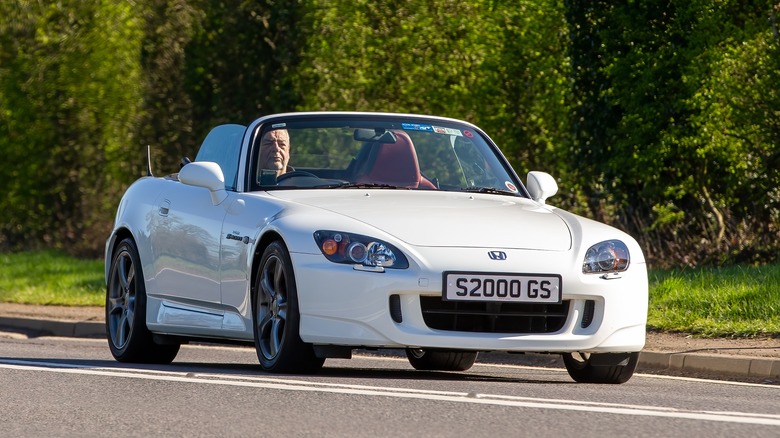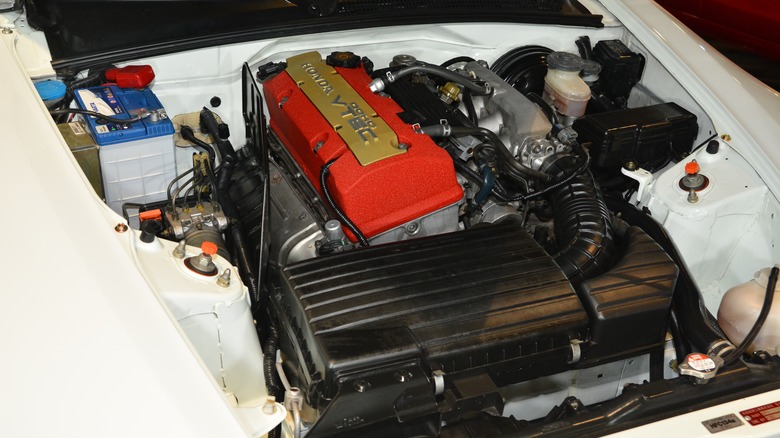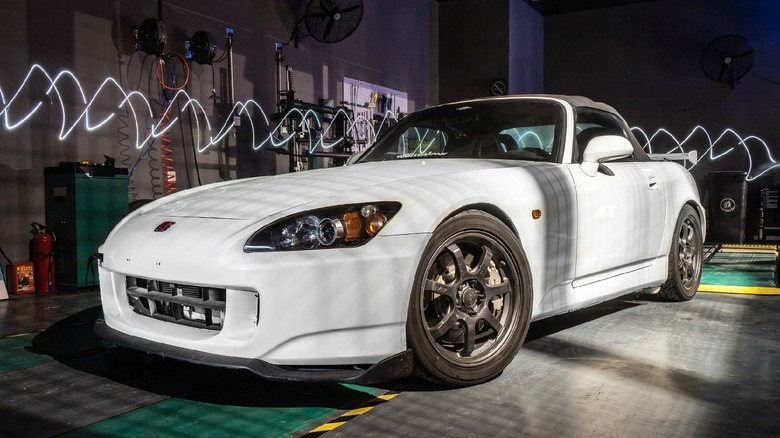Here's What Made The Honda S2000 F20C Engine So Special
Japanese automaker Honda's first production cars are the T360 mini pick-up truck and the S500 sports car. The latter was typically a four-wheeled motorcycle with a two-seat cockpit, diminutive proportions, and a high-revving motorcycle engine capable of spinning to a heady 9,000 rpm.
But as the carmaker shifted its priorities from making sports cars to more practical, family-friendly conveyances like the Civic and Accord in the early 1970s, purebred Honda fans were clamoring for the return of the fabled S model, especially after getting a taste of the Honda NSX and Acura Integra Type R in the 1990s.
It took Honda more than thirty years to resurrect its fabled S nameplate. Introduced in 2000 (1999 in Japan) to celebrate the automaker's 50th birthday, the S2000 entered the fray with similar attributes to the S500. It has a two-seat cabin, a long nose, rear-wheel drive, a convertible top, and an engine that spins, unlike any gas-fed internal combustion powerplant the world has ever seen.
Honda S2000 F20C Engine: Best Honda engine ever made?
The all-new F20C inline four-cylinder engine of the S2000 produces 124 horsepower per liter while spinning at a 9,000 rpm redline. It had the highest specific power output of any mass-produced engine until the Ferrari 458 entered the fray in 2010. The S2000 has 234 horsepower and about 161 pound-feet of torque, all fed to the rear wheels using one of the best six-speed manual gearboxes in the market and a Torsen limited-slip differential.
Honda engineers went the extra mile to make the F20C spin like mad without disorganizing its innards. It has an aluminum block with fiber-reinforced metal cylinder liners that house forged aluminum pistons and a forged-steel crankshaft with five central bearings. Moreover, it has a single-valve spring design, narrow-angle 25.5-degree intake and exhaust valves, and a high-strung VTEC valvetrain with co-axial rocker arms to reduce valvetrain friction. The real fun begins as the engine reaches 5,850 rpm when the VTEC valvetrain switches to high-lift mode.
Honda F22C1: More low-end torque
The Honda S2000's F20C engine was great, but Americans were initially disgusted by its lack of low-end torque. Since the F20C had to spin its guts out to produce power and torque, drivers of V8 engines with mountains of low-end grunt fell out of love with the Honda S2000. Honda took this to heart and unveiled the facelifted S2000 AP2 variant in 2004. The most significant change is a new engine, the F22C1, with 2.2 liters of displacement.
The F22C1 has a 90.7 mm longer stroke, reconfigured camshafts, a higher 11.1:1 compression ratio, and a slightly lower 8,000 rpm redline. Moreover, VTEC kicks in at 6,000 rpm, with 10 percent more torque beginning at 2,500 rpm despite having the same horsepower ratings as the F20C.
Production for the Honda S2000 ended in 2009, and the automaker has to release or unveil a predecessor. The F20C and F22C are renowned for consuming oil after a long track session, and the S2000 is not the comfiest sports car for extended road trips. However, all of the demerits don't matter to S2000 fans, which drive prices to the roof yearly. According to Classic, you need $28,000 to $30,000 to own a mint Honda S2000, nearly as pricey as when the vehicle debuted in the early 2000s.


